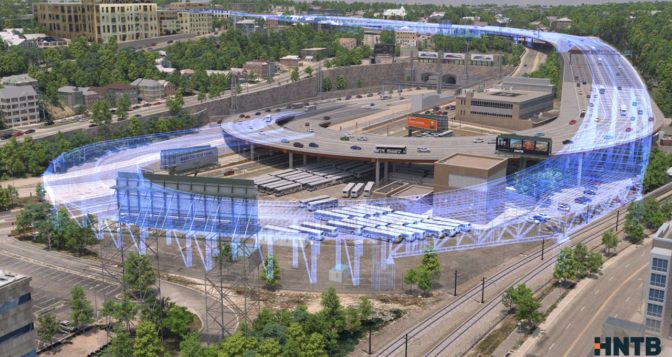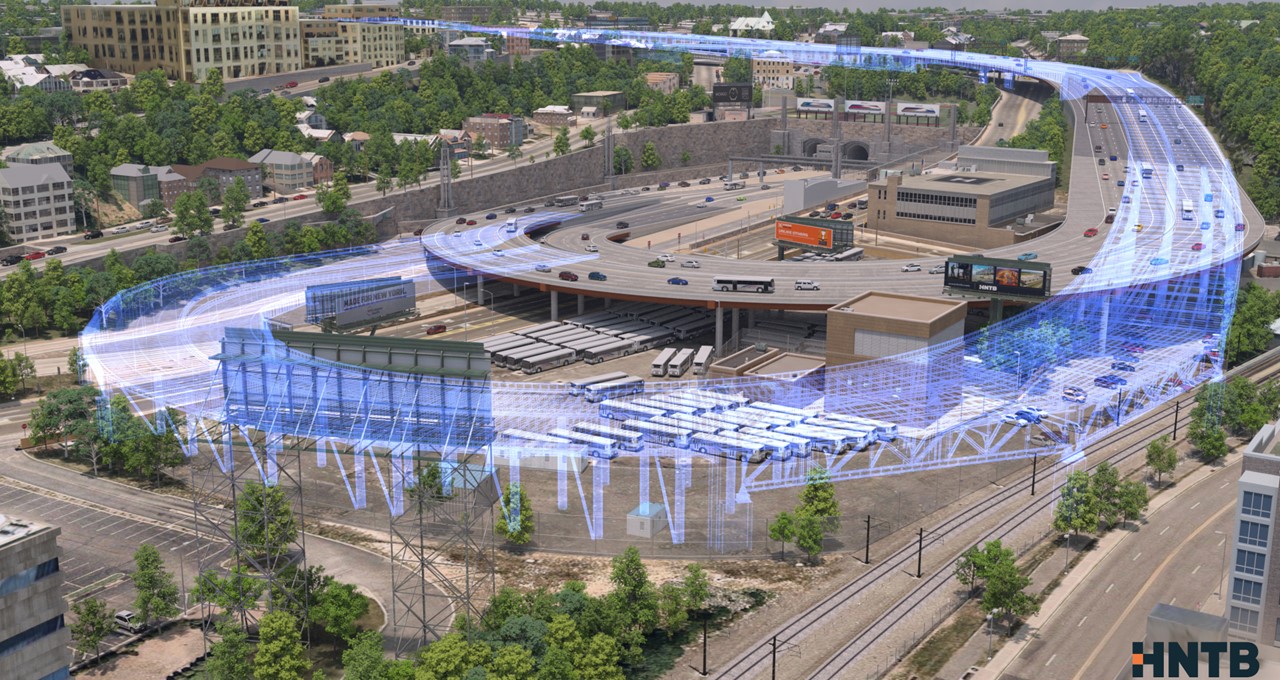Artists know that to work on high-quality renders and designs from anywhere, you need the right hardware that can keep up with your creative needs.
That’s why the designers at HNTB, a century old Kansas City, Mo.-based infrastructure firm, upgraded to workstations with Quadro RTX GPUs. And with their team now working from home, employees are using remote access to connect to that Quadro power back at the office.
HNTB specializes in visualizations, motion graphics and immersive experiences for clients across the United States, particularly in the fields of architecture, construction and transportation.
To design high-fidelity visualizations for their projects, HNTB requires substantial rendering muscle, but their previous render farm was based on CPUs only. So when the team started working more with GPU-based rendering, they experienced how real-time ray tracing not only accelerated their design process, but also enabled them to stay in creative workflows while working remotely.
By upgrading their rack workstations to NVIDIA Quadro RTX 6000 and 8000 GPUs, HNTB designers can render images faster than before, allowing them to iterate quickly and spend more time on developing their designs.
“Our team has experienced almost no downtime, and we didn’t need to scale back our current workload,” said Austin Reed, 3D visualization team lead and supervisor at HNTB. “This allows our team to work from home during these early days of COVID-19 just like we were in the office.”
The Need for Speed (and Mobility)
When HNTB started driving more real-time simulations, they knew it was important to have hardware that can handle their complex designs, massive datasets and rendering needs.
As projects take anywhere from two weeks to three months, the designers wanted to work as smartly and efficiently as possible. The ability to work from any location would keep their creativity going whenever inspiration strikes.
The project workflow typically starts with some form of aerial imagery from NearMap. Designers then import the data into Autodesk 3ds Max to begin building existing conditions around the proposed project site.
However, HNTB would previously CPU-render images locally or use their 40-node CPU render farm — and they’d have to wait hours to see the results. Even after the image finished rendering, they’d still need to review and iterate on the results.
“Are the shadows correct? Reflections? Why isn’t the ambient occlusion working? Then we’d have to make the necessary changes and go grab another cup of coffee to wait for the paint to dry,” said Reed.

Quadro RTX Brings Higher Power, Performance for Remote Design Workflows
This time-consuming rendering process ultimately became a non-issue when the Quadro RTX GPUs were installed into the Dell Precision 7920 Rack Workstations inside the server room at the HNTB office. Designers could remotely connect to their workstations from their personal desktop or laptops via Windows remote desktop and the company VPN — and bring GPU-powered performance to their remote workflows.
The RTX GPUs help HNTB achieve even more photorealistic renders, thanks to their real-time ray tracing capabilities.
With RTX, HNTB also used the extra VRAM to put large datasets directly on the GPU. Being able to remove noise and static more quickly while rendering images allows the team to be even more creative and bring high-quality immersive experiences to projects.
And with creative apps like Autodesk 3ds Max, Substance Painter, Chaos V-Ray, Unreal Engine and others enabling professionals to tap into the power of RTX GPUs, HNTB can iterate much faster and resolve geometry or shader issues before sharing the final renders with clients.
“Being able to have near one-to-one feedback while working from home allows our team to keep working on our massive projects while continuing to deliver what our clients have come to expect, even under these unusual circumstances,” said Reed.
Learn more about Quadro RTX, connecting remotely, virtualization solutions, and other tools that let you work virtually, anywhere.
